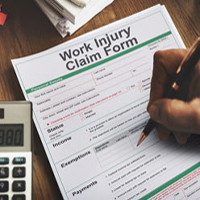DOL Rule Proposal Endangers Lives
February 22, 2019 A newly proposed Department of Labor (DOL) rule would allow 16-and-17-year-olds to operate patient powered lifts in nursing homes, hospitals, and other long-term care facilities without any supervision. Young workers already face numerous job-oriented hazards, so many labor unions and other organizations have come forward to publicly challenge the DOL’s proposal, citing not only patient safety concerns, but also the safety and health of young workers.
A newly proposed Department of Labor (DOL) rule would allow 16-and-17-year-olds to operate patient powered lifts in nursing homes, hospitals, and other long-term care facilities without any supervision. Young workers already face numerous job-oriented hazards, so many labor unions and other organizations have come forward to publicly challenge the DOL’s proposal, citing not only patient safety concerns, but also the safety and health of young workers.
The Department of Labor’s Proposal
There are many rules in place to protect the health and safety of young workers. Under current federal guidelines, 16-and-17-year-olds are banned from working in occupations that require the use of patient powered lifts. Unsurprisingly, this includes working in the healthcare field. Teens are disallowed from using most types of dangerous construction equipment, and before the DOL’s proposal, patient powered lifts were seen by the administration as equally risky.
The DOL’s proposal calls into question the dangerous nature of patient powered lifts, despite a wealth of evidence that they have been involved in numerous injuries – and even patient deaths. Although the DOL claims that patient powered lifts are quite different from dangerous construction equipment, they are still heavy hydraulic (or sometimes electric) machines that can cause serious physical harm – especially if they are used incorrectly, without proper training, or if they are defective.
Patient Lift Safety
According to the Food and Drug Administration (FDA), patient lifts can create several benefits for patients. This includes reducing a patient’s risk for sustaining injuries when moving or being moved – as well as limiting the caregiver’s risk at the same time. However, the administration also notes that improper use can result in serious injuries and death. While these injuries are typically more severe for a vulnerable and ill patient (especially if he or she is elderly), they can also be just as devastating for the caretaker involved.
Patient powered lifts are typically used to help move patients from one place to another, such as lifting someone from a bed to a bathtub. Not only can powered lifts help distribute a patient’s weight more easily, but they can also help limit the person’s discomfort depending on what illness or injury they have. Additionally, patient powered lifts ideally reduce the physical strain of the person – or people – transporting the patient. There are many different models of patient powered lifts, as well as many different designs.
Hazards for Young Workers
Teenage workers are more at risk for job hazards that result from an absence of safety and health training, unlike older and more experienced workers. Younger workers are also less likely to be familiar with their legal rights, and so they are particularly vulnerable to predatory employers who refuse to take their safety seriously. The Occupational Safety and Health Administration (OSHA) reports that young workers are at risk for job-related injuries and illnesses because of the following scenarios:
- Stressful working conditions;
- Inadequate job supervision;
- Performing dangerous work tasks – or even ones that are illegal for workers under 18-years-old;
- Inadequate safety training;
- Unsafe equipment, and:
- Pressure to complete tasks quickly
If the proposed rule passes and teens are allowed to operate patient powered lifts in hospitals, nursing homes, and other long-term care facilities, than it is essential to ensure their safety (and patient safety, too). Proponents of the proposal argue that disallowing this age group from operating patient powered lifts is unfairly keeping them from employment in the healthcare industry, but if young workers are not supervised and trained properly, preventable injuries and deaths will occur. Another important point is that since 16-and-17-year-olds are currently not allowed to work in healthcare settings, OSHA would need to create safety and health standards for them if the DOL proposal goes through.
There is a reason that numerous organizations are speaking out against the DOL’s proposal – and it is largely in part because young workers are an at-risk population who need protecting. Various labor unions have spoken out and said that instead of the rule increasing opportunities for teen workers like the DOL insists, it will create unfair – and avoidable – job risks and hazards. One legislator even wrote that the DOL must have forgotten to consult with the National Institute for Occupational Safety and Health’s (NIOSH) before proposing the rule change. NIOSH has provided testimony in the past asserting how dangerous it would be to allow 16-and-17-year-olds to use patient powered machinery without supervision.
We will continue to keep our clients and readers updated on this topic, which is still developing. If you are a young worker and would like to learn more about general safety and health requirements, as well as what your rights are in the workplace, please visit The Occupational Safety and Health Administration site. If you have questions or concerns about a workplace injury, we can help. Contact a representative at our firm directly.
Allentown Workers’ Compensation Lawyers at Galfand Berger, LLP Represent Individuals Injured at Work
If you were injured at work, please contact our Allentown Workers’ Compensation lawyers at Galfand Berger. With offices located in Philadelphia, Bethlehem, Lancaster, and Reading we serve clients throughout Pennsylvania and New Jersey. To schedule a consultation, call us at 800-222-8792 or complete our online contact form.
 Google Screened
Google Screened
